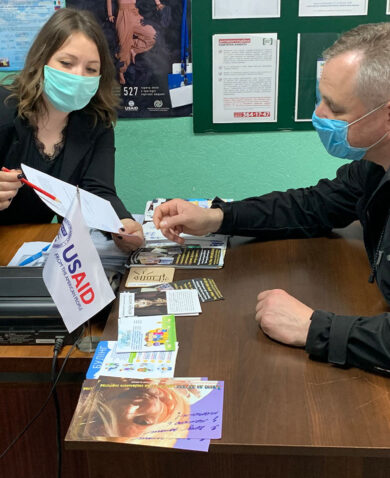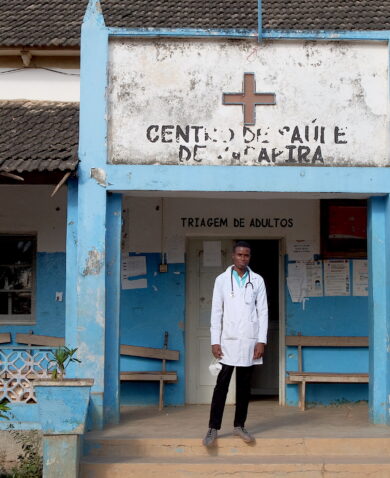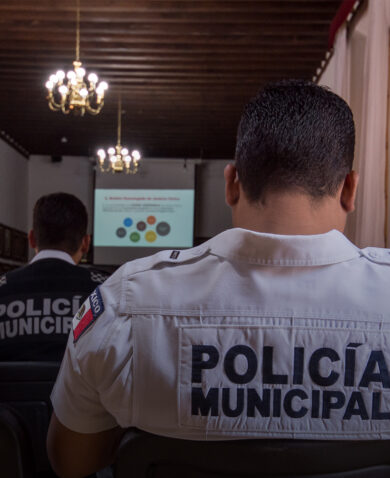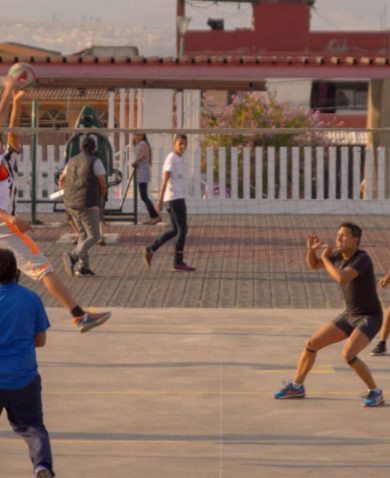
Of Banks and Barrios: Engaging Local Partners to Reduce and Prevent Violence
October 17, 2017 | 3 Minute ReadBy engaging non-traditional local partners, one project is using a unique approach to reduce crime and violence in Mexico.
Decades of work to disrupt cycles of violence in developing countries has resulted in some promising, replicable approaches. Yet, to get to a “best-fit” approach within a particular country, we know that we cannot simply cut and paste strategies and tools from one context to the next. Considering this, what can market research conducted by a bank in Tijuana tell us about local systems of violence prevention?
Using the USAID Local Systems Framework, one project found the answer. The Juntos para la Prevención de la Violencia (JPV – Together for the Prevention of Violence) project is working towards breaking the cycle of violence and crime in vulnerable communities in Mexico. Their work is focused in 10 municipalities that form a city network across five Mexican states: Tijuana, Baja California; Chihuahua and Ciudad Juárez, Chihuahua; Escobedo, Guadalupe y Monterrey in Nuevo León; Zapopan, Tonalá, and Guadalajara in Jalisco; and Morelia, Michoacán. High levels of violence and corruption, as well as the presence of narco-trafficking cartels, make it particularly challenging to devise and implement feasible and sustainable crime and violence prevention strategies in Mexico. To combat this, JPV has developed a local prevention system. This local system focuses on crime and violence prevention by fostering collaboration among different actors and establishing incentives that encourage active participation of the actors and potential actors over time.
A local prevention system includes a set of interconnected actors within a specific locality — from the public sector, academic institutions, civil society, and private sector — who work together to reduce incidences of violence and crime. The actors identify the causes of violence, implement specific solutions for appropriate and effective targeting of those causes, and ensure knowledge management. The system is composed of three main axes, which are interdependent: Once JPV identifies the local system, the project supports the actors in identifying a strategic issue or challenge and its causes, implementing a solution accordingly, and then evaluating the solution’s effectiveness and results.
In one such local prevention system in Tijuana, Mexico, the local bank facilitated the formation of homeowner associations to deal with insolvent mortgages. Following the 2008 housing crisis, homes lost their value and many people were forced to abandon their homes, contributing to increased crime and instability. The bank wanted to rebuild and invest in the area, but community members were reluctant to purchase there due to security challenges. JPV linked the bank with service providers to promote crime prevention through environmental design and facilitated training on tools for identifying vulnerability to risk and measuring crime reduction. The project forged a strategic alliance between these groups to better incorporate social indicators in their efforts and ultimately improve the value of the land. This collaboration had the byproduct effect of reducing crime in the community by increasing residents’ sense of ownership and community engagement, thereby strengthening community fabric. The bank reduced insolvency rates from 80 percent to 20 percent, which also contributed to a reduction in crime as homes were occupied, property values increased, and the community became more engaged. The bank is now piloting seven more projects and collaborating with JPV to measure the crime rates and effects of these interventions as a means of focused deterrence, especially to understand if over time the crime is reduced or simply displaced to neighboring communities. This innovative approach to crime prevention exhibits the importance of analyzing local systems in a holistic manner, and how to identify and integrate “non-traditional actors” that already have legitimacy and respect within a community.
The process of identifying and analyzing a local protection system consists of three steps:
- Assess who the local actors are and detect which local actors can comply with the functions of a system, such as resource coordination and management, solutions, training, and impacting public policy.
- Identify the system based on the actors detected.
- Perform the 5Rs analysis to evaluate system functionality (i.e., results, roles, relationships, rules and resources).
Once mapped and understood, the local prevention system requires that an ”anchor actor” be identified. The designated anchor actor facilitates collaboration, communication, transparency, accountability, sustainability, focus on outcomes, and evidence-based analysis among the various actors in the system. This strategic entity provides cohesion and capitalizes on the isolated crime and violence prevention efforts carried out within the territory.
Through the local systems of prevention approach to crime prevention, Mexico JPV is adapting the USAID Local Systems Framework in an innovative manner to lay the foundation for citizen security in Mexico for years to come. Chemonics expects that JPV, in collaboration with non-traditional local actors, will continue to develop tested, evidence-based local practices and a successful crime prevention model that can be replicated in many other parts of Mexico to help break the cycle of violence.
































